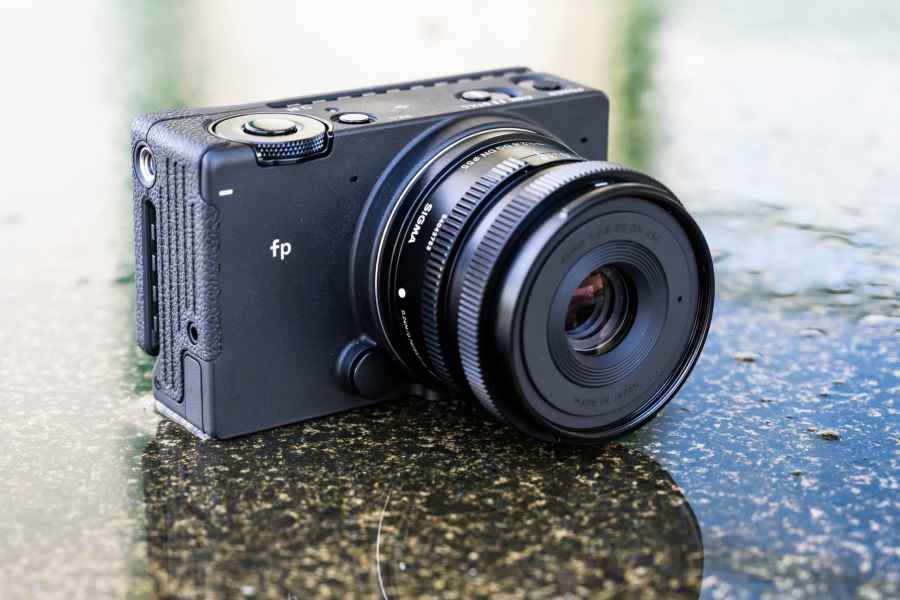Sigma fp: At a glance
- £1999 (body only)
- £2399 with Sigma 45mm f/2.8 DG DN Contemporary lens
- 24.6MP full frame Bayer CMOS sensor
- L-mount
- Electronic shutter
- 12.5EV dynamic range
- Cinema DNG 12-bit video support
- 3.15in touchscreen
A year ago Sigma announced plans to discontinue its SD-series of APS-C format cameras and shift their attention to a new full-frame system built around the L-mount. Ever since we caught wind that Sigma was working on a new full frame camera, we’ve been following progress closely.

The Sigma fp will be made available with the Sigma 45mm f/2.8 DG DN Contemporary lens for a kit price of £2399
Earlier this summer we reported more detailed information about the Sigma fp. Three months on we’re now at the point where the first working samples have started to arrive. AP was one of first to lay hands on the Sigma fp at a recent hands-on event, giving us a chance to form an early opinion of what we can expect when it finally goes on sale.
Sigma fp: Features
The fp, which stands for fortissimo pianissimo (‘very small but loud’), squeezes a 24.6-million-pixel back-illuminated CMOS Bayer sensor that’s believed to be made by Sony, into a compact and robust body. This is a different approach to using the multi-layer Foveon sensor technology Sigma has stuck by for many years.
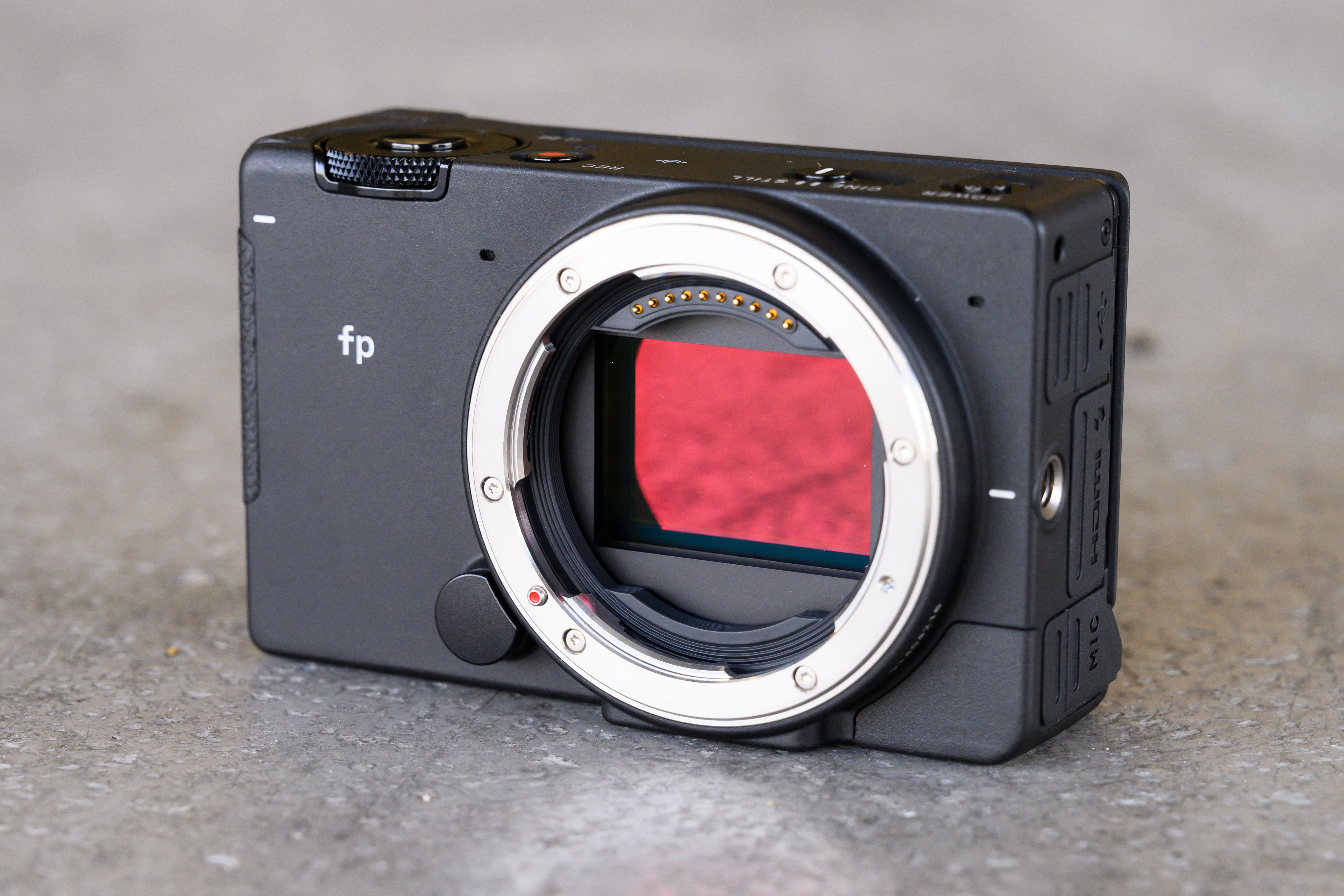
Sigma has equipped the fp with a Bayer sensor rather than a multi-layer Foveon sensor
The sensor provides an ISO range of 100-25,600 (expandable to ISO 6-102,400) and relies on contrast detection for focusing, with an AF working range of -5 to 18EV. It has a 49-point AF system that supports face/eye detection as well as an AF tracking mode. One of the ways Sigma has been able to make the fp as small as it is is through the employment of an electronic shutter rather than a mechanical shutter. This facilitates quieter shooting whilst eliminating shutter shock, but it does mean the fastest flash synchronisation speed is just 1/30sec when shooting stills.

A top view showing the simple layout of buttons and switches. The Cine/Still switch reveals a bright red background when Cine mode is selected
The shutter speed can be set between 30secs and 1/8000sec and continuous shooting at up to 18fps can be attained for up to twelve frames, with a higher buffer depth of 24 frames at 3fps. The fp’s electronic in-body stabilisation function can be used for stills and video, although unfortunately this function couldn’t be selected on our pre-production sample. We’ll have to wait to try a final review sample before we can comment on how effectively it works with stabilised L-mount lenses.
Elsewhere, the Sigma fp makes tone curve adjustment and fill light adjustment functions available in-camera, which have only previously been available in Sigma’s Photo Pro software. There are newly introduced buttons for instant access to each of the tone control and color mode menus too, which are located beneath the screen.

The Sigma fp has a 1/4”-20 threads on both sides of the body as well as on its underside
Though the fp will be of interest to stills photographers to whom size and portability is extremely important, we sense it’s more likely to end up in the hands of videographers after a small, lightweight and highly capable cine camera. The product images that were supplied with the press material, showing the Sigma fp mounted within a cage and attached to a professional drone, implies this too.
Its video specification is impressive, with 4K UHD 24p recording being supported in 12-bit format to an external recorder or direct to an attached SSD drive. There’s 4K UHD video at 24,25 or 30p in 10-bit or 8-bit too, however internal recording is restricted to 8-bit and support for playing Cinema DNG footage in-camera is not yet available and will follow via a firmware update at a later date.
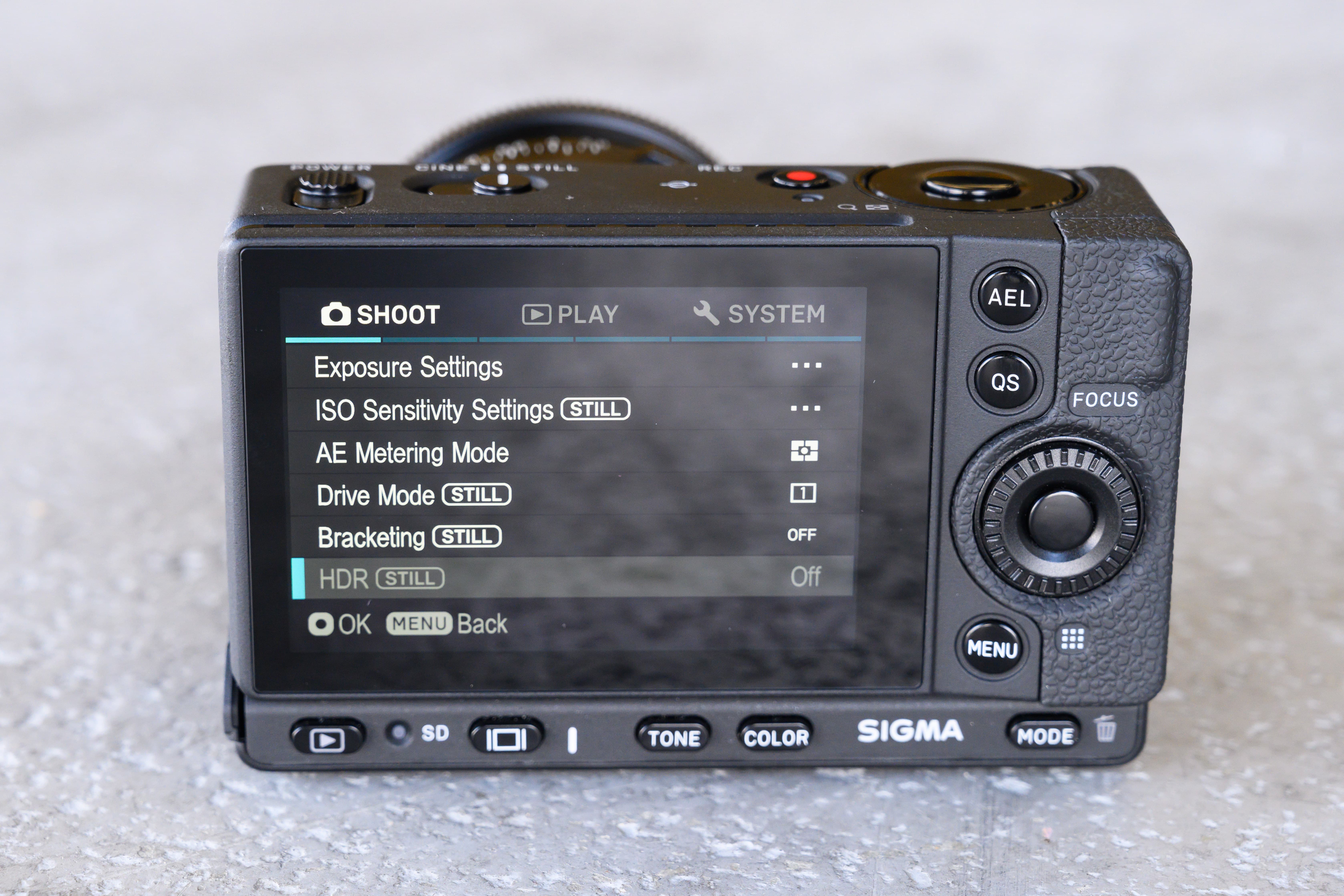
With no mode dial, shooting modes are selected using the mode button at the bottom right
In keeping with its cine appeal, Sigma has added a director’s viewfinder mode – a little misleading given the fp doesn’t actually have a viewfinder. In this mode videographers can reproduce the look of other professional cine cameras such as those from Arri, Sony and Red.
To avoid excessive heat building up during long spells of video recording, a heat sink is also added between the rear of the camera and the screen. Don’t be fooled for thinking the 3.15in, 2.1-million dot screen is the tilting type though. It is in fact a fixed screen, however it does support touch control that can be used to navigate the menu and reposition the AF point.
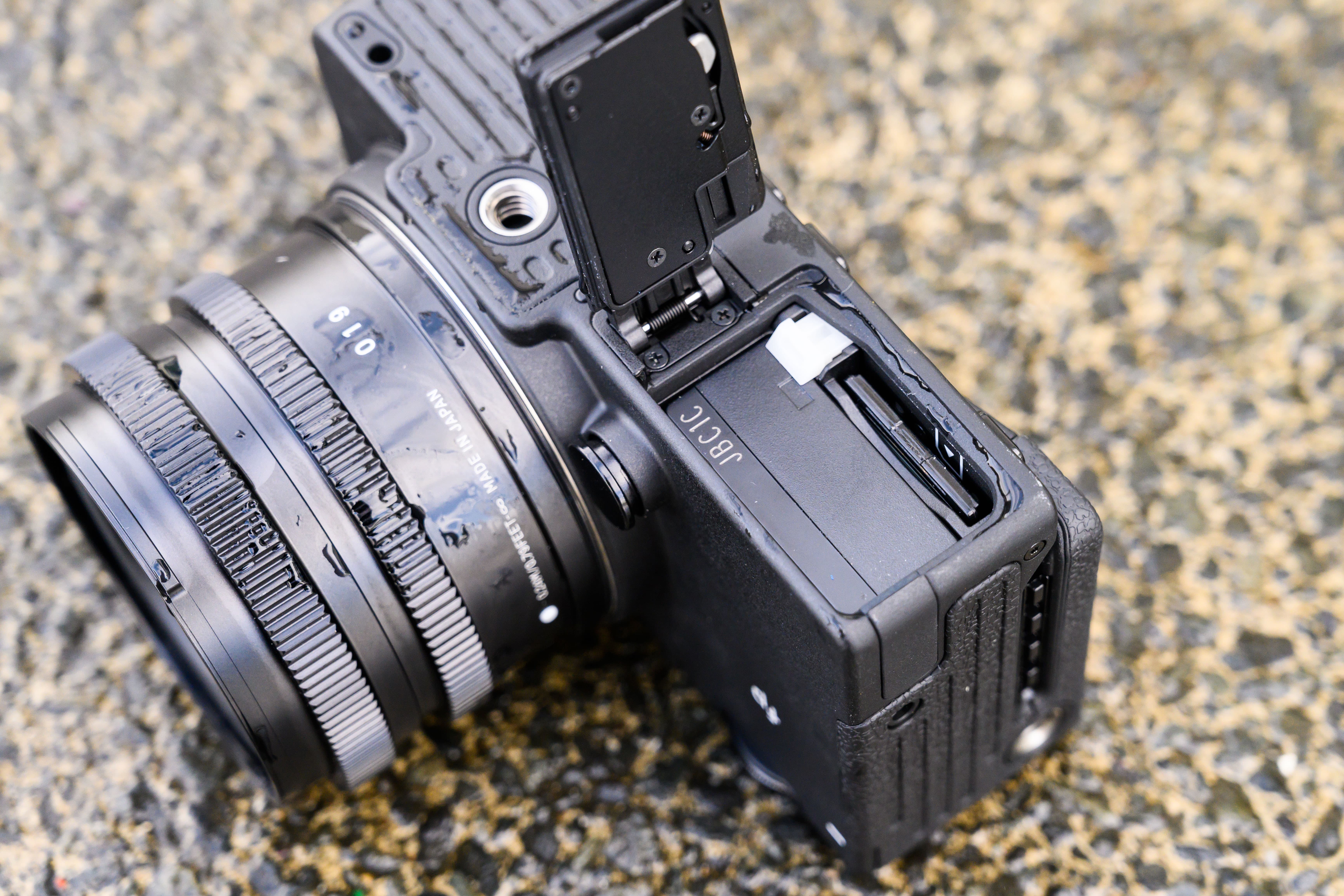
The single SD card slot is located beside the battery
The Sigma fp accepts SD cards via a single slot that’s located next to the battery. The BP-51 Li-ion battery it uses is good for just under 300 shots on a single charge and can be topped up when the power is turned off via the USB Type-C port at the side. A 3.5mm microphone input is also present, but a headphone port to monitor audio levels has been left out.
Sigma fp: Build & Handling
With a boxy design, lack of sculpted grip and little in the way of a thumb rest at the rear, our first impression of the fp’s handling is that it leaves a lot to be desired. The good news is that two optional handgrips will be made available for the camera, which like the AG-R2 attachment grip for Sony’s RX100 series, should improve the handling tenfold. Unfortunately neither were available for us to try during our hands-on session.
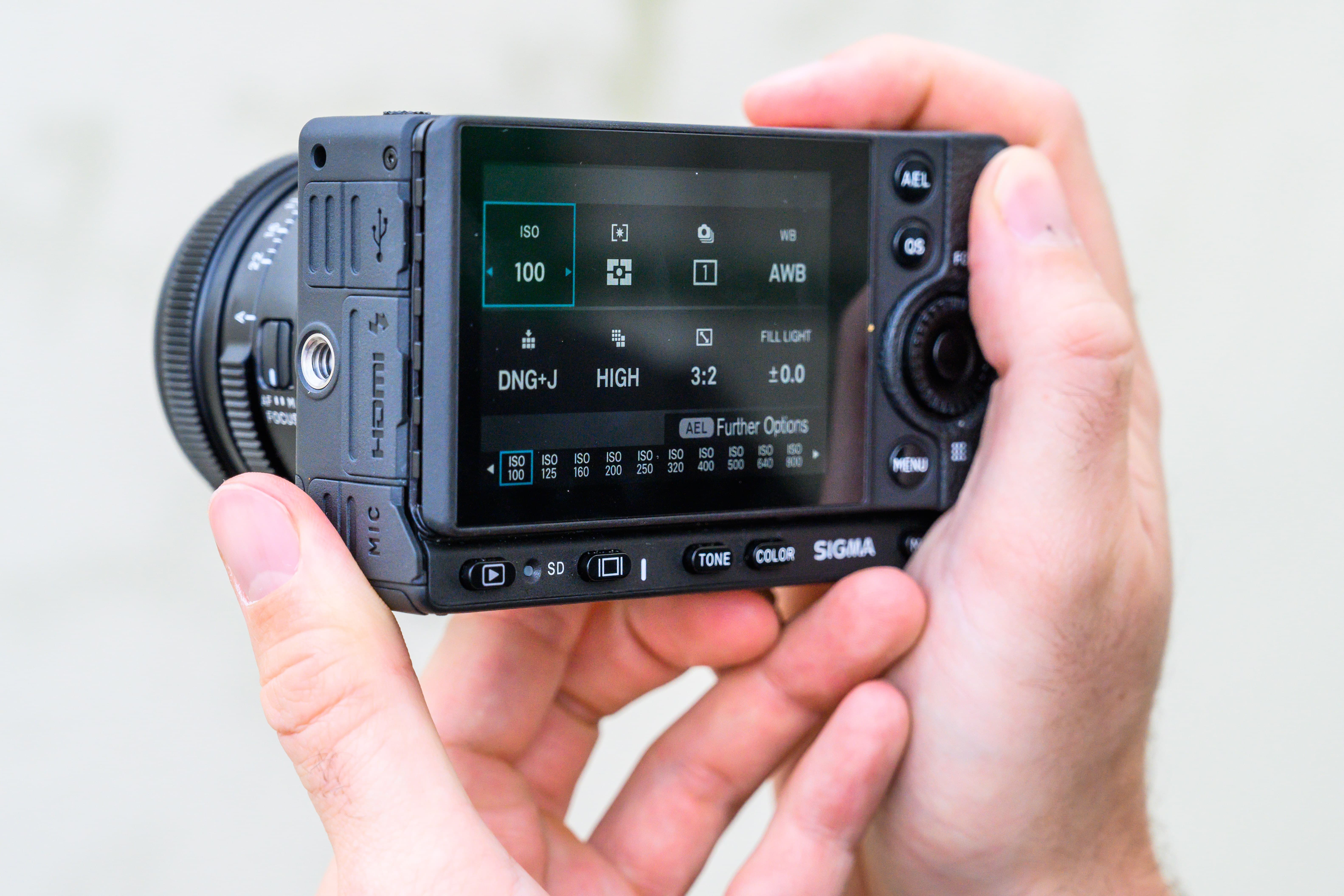
ISO and a range of common settings, including metering mode, white balance, image quality and aspect ratio can be adjusted from the quick set menu
For such a small camera, the arrangement of buttons and dials is good, if a little fiddly for those with big handy and large fingers. On the top plate you get a power switch beside a cine/stills switch and movie-rec button. A large top dial encircles the shutter button, while at the rear you get multi control dial, quick set button for making instant adjustments to common settings and an auto-exposure lock button. You’ll notice there’s no joystick or mode dial, but shooting modes are easily accessed from the mode button and the AF point is moved by touching the screen or using the multi control dial.
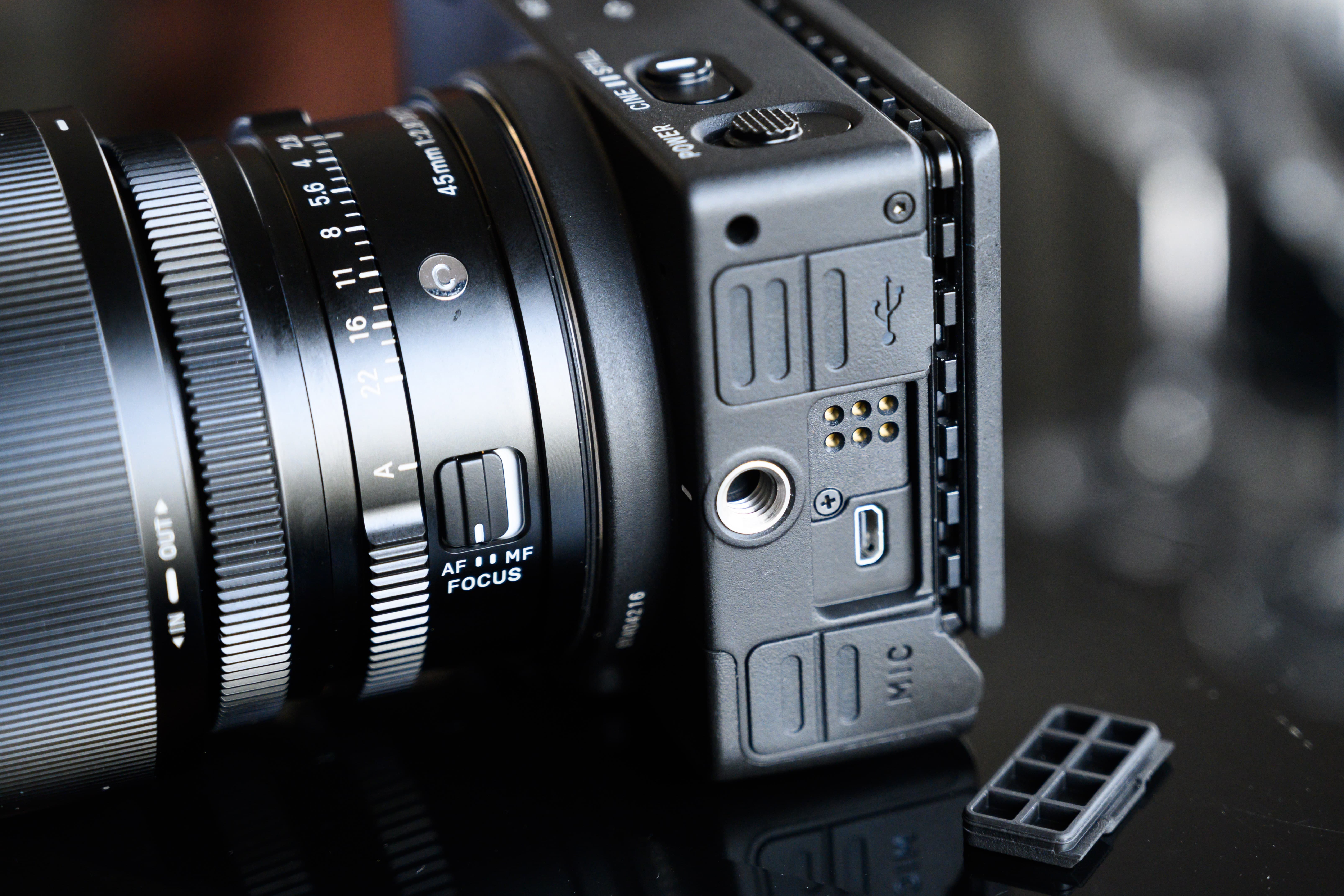
Here the HDMI port cover has been removed ready to accept the hot shoe unit (HU-11)
For a full-frame camera that weighs just 370g body only, you could be mistaken for thinking that it’s not particularly rugged, but this couldn’t be further from the truth. With solid die-cast magnesium panels and a dust-and-splash-proof structure, the fp feels extremely solid and well made. The sealing on 42 points across the body should see it endure an occasional rain shower, but I can foresee the rubber HDMI port cover getting lost very quickly. Unlike the microphone and USB port covers its not permanently fixed and could easily be mislaid.
Sigma fp: First impressions
Sigma is well known for its rather eccentric camera designs. Though the fp might not be as whacky as some of those we’ve witnessed in the past, it’s different enough to stand out from the crowd.
Cramming such a large sensor in such a small body is an interesting move. I found that it handles best when it’s paired with small L-mount primes like the Sigma 45mm f/2.8 DG DN Contemporary lens we used it. Pair it up with large and heavy L-mount zooms and you’ll find they dwarf the body and make it feel very front heavy and unbalanced.
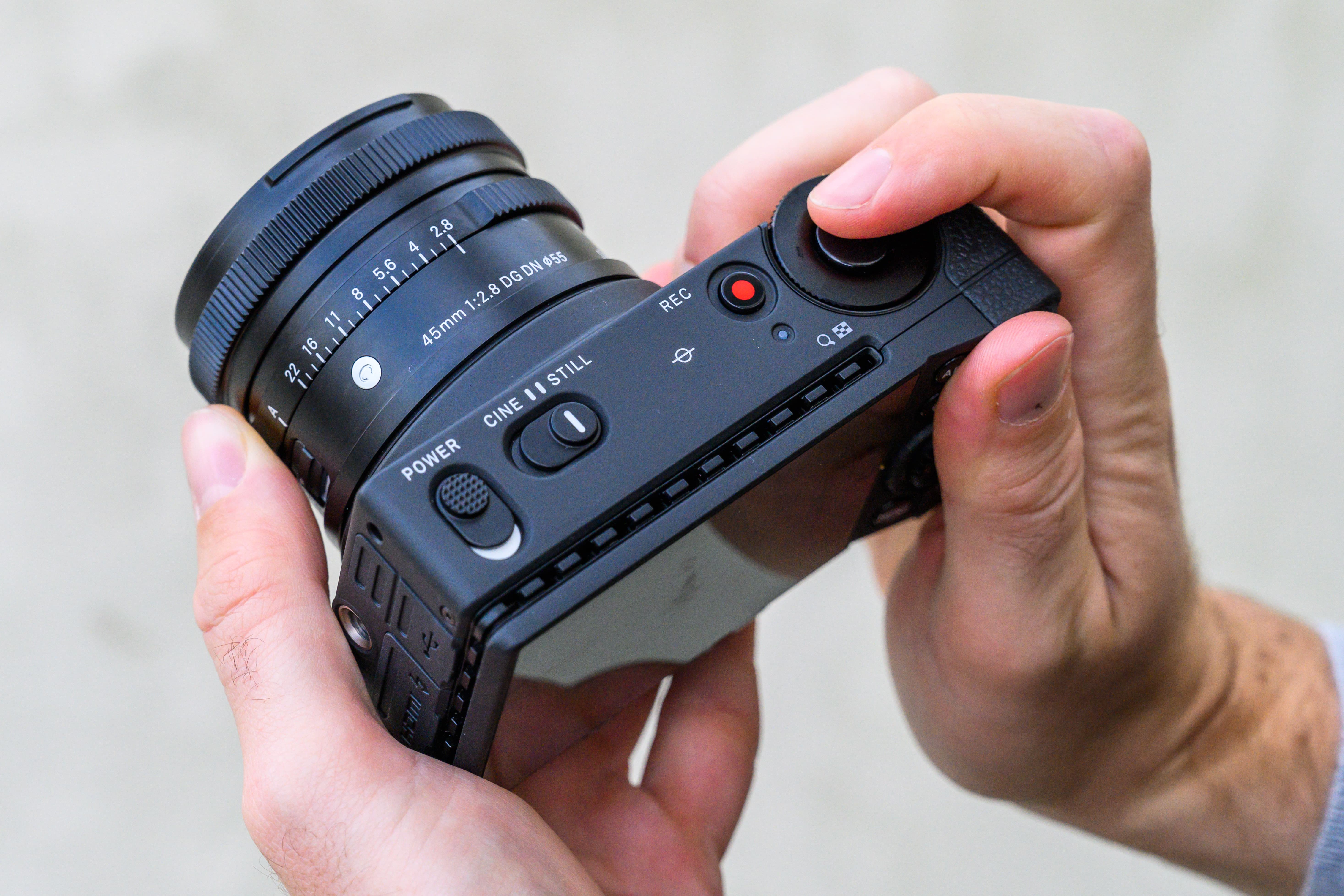
The fp’s boxy design won’t be to everyones taste. We look forward to finding out how it handles with the optional handgrips
Its lack of an in-built viewfinder and tilting screen is likely to shift many photographers elsewhere, so we can see it being more of a niche camera than a mainstream one. That being said, its size and electronic shutter could have its place in situations that demand utmost discreetness – street photography being one example.
Where we can see it having appeal is with cine users, especially the kind who need to keep their drone, rig or cage setup as light as possible and demand 12-bit CinemaDNG video with advanced video output options.
Sigma fp: Lenses, accessories and pricing
The Sigma fp will initially be sold in two configurations. It’ll cost £1999 (body only) and will also be available with the Sigma 45mm f/2.8 DG DN Contemporary lens for £2399. The camera is compatible with the growing number of L-mount lenses in Sigma’s lineup, as well as those made by Panasonic and Leica, who teamed up with Sigma to form the L-mount alliance around this time last year. There’s nothing to prevent users mounting Sigma SA mount or Sigma EF mount lenses to the Sigma fp either, however this does require Sigma’s MC-21 adapter.
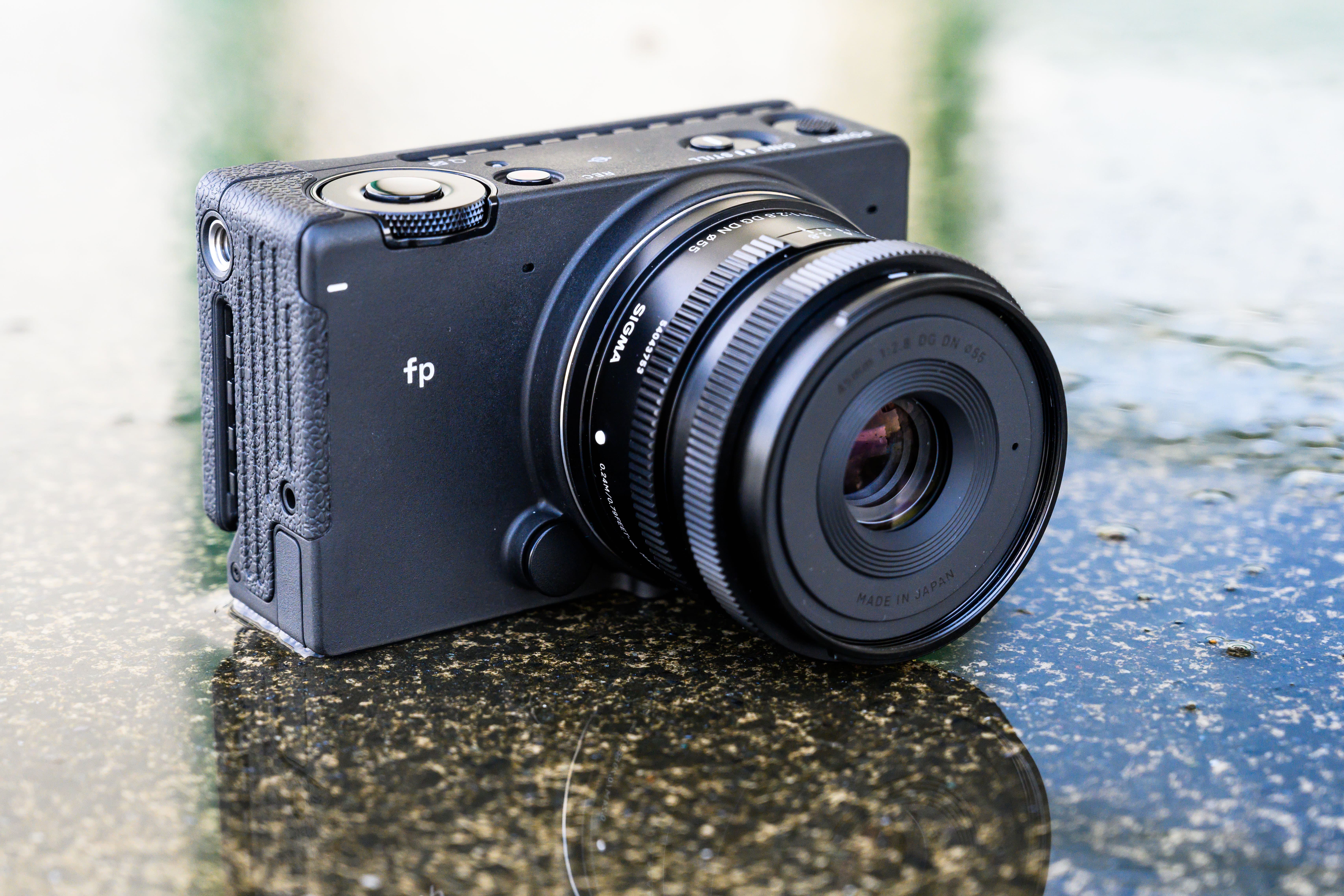
The Sigma fp features weather sealing on 42 points across its body
There is a long list of accessories available for the Sigma fp, some of which are included with the camera, with others being optional. Those included with the camera include the strap, USB cables, USB AC adapter, hot shoe unit (HU-11) and BP-51 Li-ion battery. The camera fully supports charging via USB, however a conventional charger isn’t included in the box and is available separately for £99. Likewise, a cable release (CR-41) isn’t included and is an optional extra that costs £44.

Here we see the hot shoe unit (HU-11) attached to the side of the Sigma fp
The most expensive accessory for the Sigma fp is the LCD View Finder (LVF-11), which costs £290. This is exclusively designed for the Sigma fp and mounts over the LCD monitor to cut out extraneous light, but does add considerable bulk to the rear and isn’t the same as having a dedicated viewfinder built in to the body.
Other optional accessories include a BPL-11 base plate (£80) that allows standard video shooting accessories to be attached via a 3/8in thread. There are also two handgrips available. The smaller HG-11 (£60) and larger HG-21 (£100). These attach to the side of the camera and have been designed to provide more comfort and a sturdier grip.

